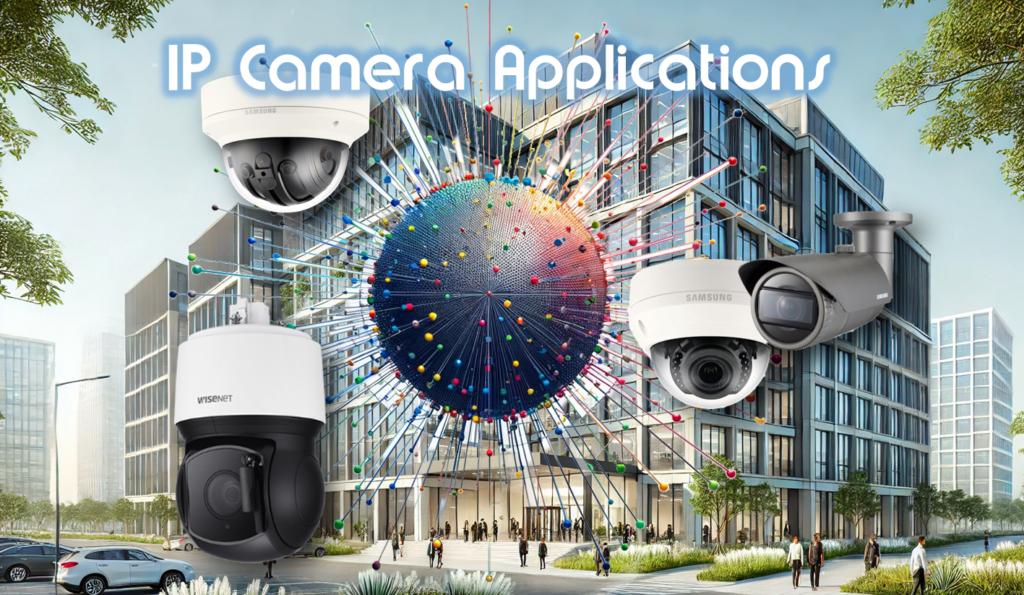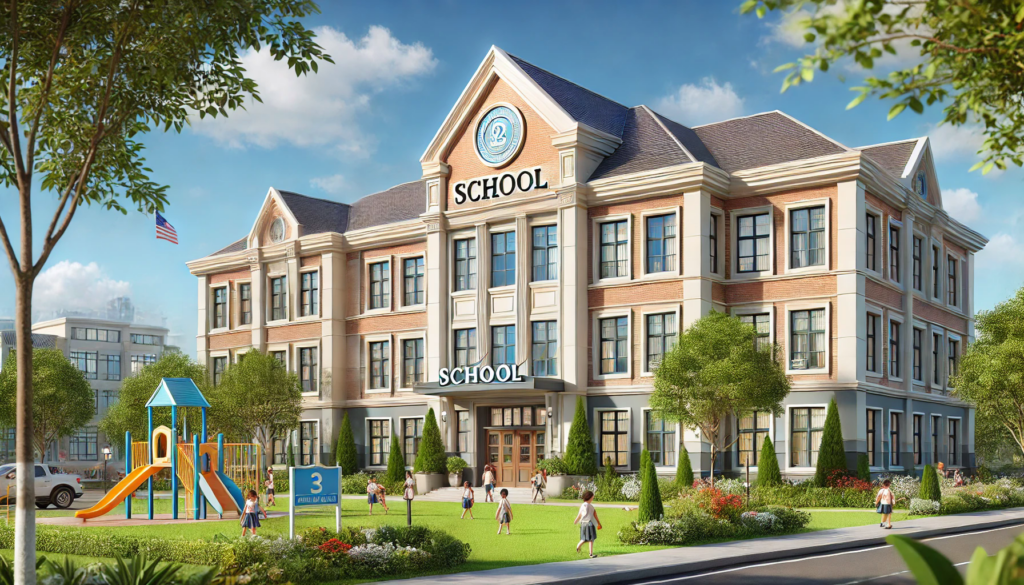Corporations, Education, and Health Organizations Use IP Camera Systems

Corporations, health organizations, and educational organizations use IP camera Systems for various purposes, primarily to enhance security, improve operational efficiency, and ensure compliance with regulations.
Why do you need a surveillance system? What are your objectives? This article reviews how organizations use surveillance systems and provides suggestions for defining your goals.
IP Camera Systems Prevent Theft and Vandalism in All Organizations

IP camera systems can deter crime by their very presence. Unfortunately, sometimes thieves strike anyway. Surveillance systems can capture misbehavior and sometimes prevent it.
Capture Incidents: Organizations are concerned about theft and vandalism. Traditionally, surveillance systems recorded video from strategically placed IP cameras. If a theft occurred, the security department would review the video to determine who was responsible. This surveillance concept provides evidence for investigations and legal proceedings. It cannot stop or prevent theft or property damage.
Prevent Incidents: The latest use of AI-enhanced cameras has changed that dynamic by notifying security as soon as a suspicious event occurs. This allows theft and vandalism to be stopped before they happen.
Surveillance Systems Increase Patient Safety and Care in Healthcare Institutions

Detect Problems: IP Camera Systems are used in hospitals and other healthcare organizations to monitor patients and protect sensitive areas such as pharmacies, medical records, and computer rooms.
Prevent Problems: IP camera systems with intelligence that immediately notify the staff of dangerous incidents can prevent falls and accidents before they become a problem. For example, a camera viewing the medical records room can quickly detect unauthorized entry and notify security.
Deterring Theft: Surveillance systems help prevent the theft of medical equipment, pharmaceuticals, and patients’ and staff’s personal belongings.
Tracking Assets: Cameras monitor the movement of valuable equipment and ensure it is used appropriately and not removed without authorization.
Ensuring Compliance: Surveillance ensures that healthcare professionals comply with hygiene practices, safety protocols, and patient care standards.
Incident Investigation: Video footage can be reviewed to investigate incidents involving staff or patients, providing evidence for internal reviews or legal matters. There are several ways to record the video.
To learn more about hospital security, please read our article, How Technology Helps Hospitals.
IP Camera Systems Enhance Safety and Security in Schools

Preventing Violence: Surveillance systems help deter and quickly respond to acts of violence, bullying, or harassment in schools and campuses. IP camera systems that include AI enhancement can notify the administration as soon as the camera system detects a fight occurring.
Ensuring Discipline: Surveillance helps monitor student behavior in common areas such as hallways, cafeterias, and playgrounds, providing a safe and orderly environment.
Bullying Prevention: Cameras can deter bullying and provide evidence for investigating and addressing incidents of bullying or harassment.
Securing Entrances and Exits: Cameras monitor entrances and exits to ensure that only authorized individuals enter the premises, enhancing the institution’s overall security. Cameras can enhance Door Access Control Systems to ensure that only authorized people and students can enter the building.
Perimeter Monitoring: Surveillance systems help monitor school boundaries and prevent unauthorized access or intrusions.
Surveillance Systems Provide Crisis Management and Emergency Response
Emergency Situations: Cameras provide real-time information during emergencies, coordinating evacuation or lockdown procedures.
Post-Incident Analysis: Reviewing surveillance footage can help analyze the effectiveness of emergency response and improve future crisis management plans.
IP Camera Systems Monitor School Efficiency
Monitoring Activities: Surveillance helps monitor school activities and events, ensuring they run smoothly and safely. It can also help determine whether the staff must monitor hallways, lunchrooms, and auditoriums.
Resource Allocation: Video analytics can help optimize resource allocation, such as staffing and facility usage.
IP Camera Systems Ensure Compliance and Provide Legal Protection
Regulatory Compliance: Surveillance systems help educational institutions comply with safety regulations and standards.
Legal Evidence: Video footage can provide crucial evidence in case of legal disputes or incidents involving students, staff, or visitors.
To learn more about school security, please read our article, Enhancing School Safety with Technology.
Surveillance Systems are Used in Factories to Maximize Operational Efficiency and Safety

Monitoring Workflow: Cameras monitor production lines, warehouses, and other operational areas to ensure processes run smoothly and efficiently.
Quality Control: Surveillance helps monitor the quality of products and services, identifying issues or inefficiencies in real-time.
Remote Supervision: Managers and supervisors remotely monitor multiple locations, ensuring consistency and efficiency across different sites.
IP Camera Systems Increase Safety in the Workplace
Ensuring Safety Protocols: Cameras monitor adherence to safety protocols and procedures, helping to prevent workplace accidents and providing a safe working environment.
Monitoring Hazardous Areas: Surveillance in areas with heavy machinery, hazardous materials, or high-risk processes ensures that safety guidelines are followed.
Compliance with Regulations: Surveillance helps ensure compliance with industry regulations and standards, including OSHA guidelines and other safety mandates.
Monitor Hazardous Areas: IP cameras can view high-temperature ovens or areas containing flammable gases. To learn more, read our article Cameras for Extreme Environments.
Summary of How IP Camera Systems are Used
IP Camera Systems can be used in hospitals, factories, schools, and other organizations. It is always important to define your objectives before purchasing a surveillance system. This ensures that you get the correct type of camera equipment.
Organizations use surveillance cameras for various purposes, primarily to enhance security, improve operational efficiency, and ensure compliance with regulations.
Surveillance systems play a crucial role in healthcare, factories, and educational institutions by enhancing security, ensuring safety, and improving operational efficiency. By strategically implementing and managing these systems, institutions can create safer environments for patients, students, staff, and visitors.
If you want help selecting the best IP Camera System, please call us at 1-800-431-1658 in the USA or 914-944-3425 worldwide or use our contact form.